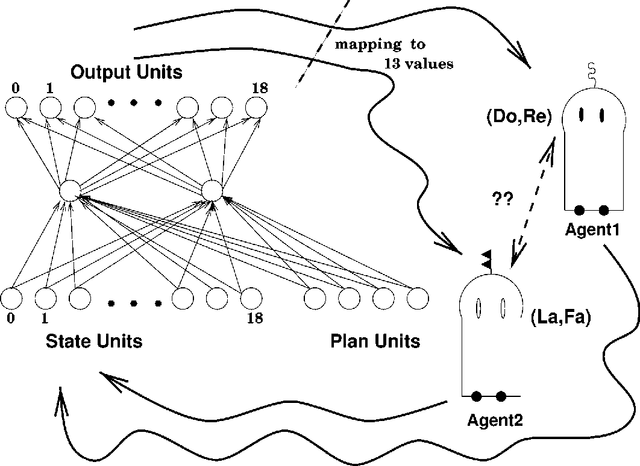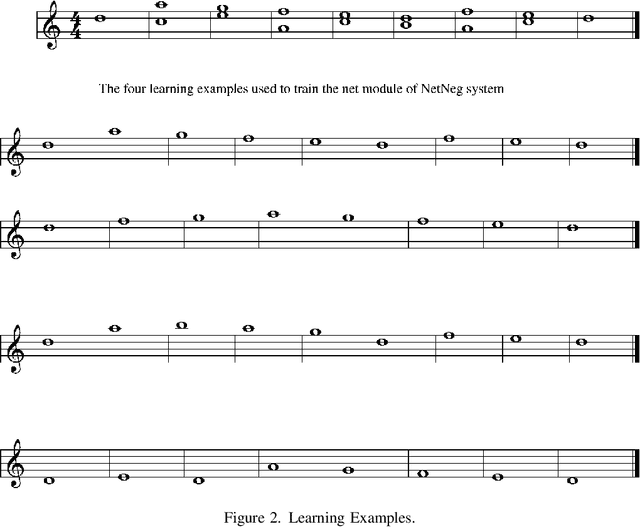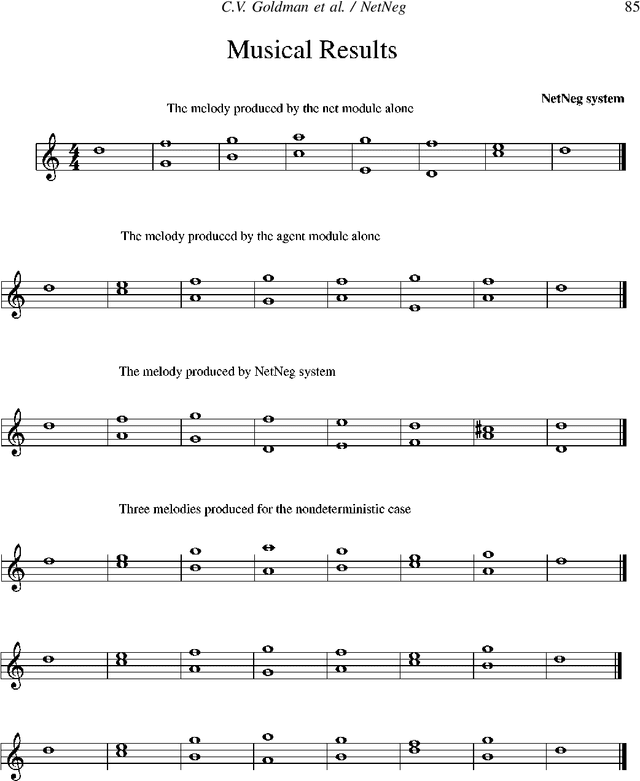NetNeg: A Connectionist-Agent Integrated System for Representing Musical Knowledge
Paper and Code
Mar 17, 2002


The system presented here shows the feasibility of modeling the knowledge involved in a complex musical activity by integrating sub-symbolic and symbolic processes. This research focuses on the question of whether there is any advantage in integrating a neural network together with a distributed artificial intelligence approach within the music domain. The primary purpose of our work is to design a model that describes the different aspects a user might be interested in considering when involved in a musical activity. The approach we suggest in this work enables the musician to encode his knowledge, intuitions, and aesthetic taste into different modules. The system captures these aspects by computing and applying three distinct functions: rules, fuzzy concepts, and learning. As a case study, we began experimenting with first species two-part counterpoint melodies. We have developed a hybrid system composed of a connectionist module and an agent-based module to combine the sub-symbolic and symbolic levels to achieve this task. The technique presented here to represent musical knowledge constitutes a new approach for composing polyphonic music.
 Add to Chrome
Add to Chrome Add to Firefox
Add to Firefox Add to Edge
Add to Edge